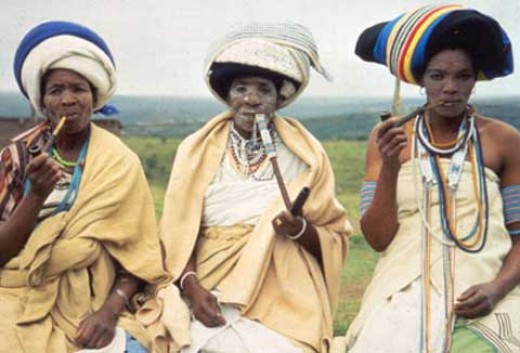San hunter-gatherers
The word ‘San’ means ‘people different from ourselves’. The San, who were hunter-gatherers, were the first people to live at the Cape. They got their food by hunting wild animals and gathering plant foods like fruits, nuts, berries, mushrooms and roots.
Hunter-gatherers lived in small groups. They were nomadic which means that they did not settle in one place. They moved around to find different plant foods at different times of the year, as well as good water resources. They believed that all the land belonged to the community.
They hunted using arrows coated in poisons obtained from snakes, plants, beetles and scorpions. They made tools and musical instruments from wood and stone and clothing from animal skins.
For thousands of years, hunter-gatherers lived all over southern Africa. We know this because of the San’s rock paintings and engravings which show us how they lived. When the Dutch colonised the Cape in the 17th century there were San hunter-gatherers living at the Cape and in the rest of southern Africa. The San were called Bushmen by the Dutch, because they made their homes in the bush.
Khoikhoi herders
| Vocabulary | Definition |
|---|---|
| Pastoralists | people who raise livestock for food |
| Status | position |
| Indigenous | the first people on the land |
 Khoikhoi Image source
Khoikhoi Image source
The word ‘Khoikhoi’ means ‘Men among Men’. The Khoikhoi were similar to the San in appearance, only a little taller. They were pastoralists who lived along the coastal regions of the Cape. They measured their status and wealth in sheep and cattle. Some of their clan names were Gamtoos, Chainoqua and Hessequa. Their lives revolved around water, animals and land. They made tools, weapons and ornaments from copper and iron which they obtained by trading with Africans from the North. The San and Khoikhoi had many conflicts over cattle and land.
Strandlopers were part of the Khoikhoi family but they lived in caves on the beaches. They lived off fish and shellfish. Archaeologists have found mounds of shells in caves, together with animal bones and stone tools. The Dutch settlers referred to the Khoikhoi as Hottentots, because of the sound of the language. This word is now considered to be insulting and is no longer used.
Activity 1- Informal Assessment
What were the Khoikhoi who lived from the sea called? (1)
Explain why land was so important to the indigenous people? (1)
Complete the following sentence: ‘The San ate wild animals, berries…’ (4)
Who were the Gamtoos, Chainoqua and Hessequa? (1)
How do we know the San were creative people? (3)
What have archaeologists dug up that taught us about the Strandlopers? (3)
Tabulate the differences between the San and the Khoikhoi. (4)
Total: 17
Where African farmers were settled
 Traditional Xhoza women smoking their pipes Image source
Traditional Xhoza women smoking their pipes Image source
The Xhosa tribes came from Central Africa and settled in the Eastern Cape where the Transkei and Ciskei are today.
African farmers planted and ate sorghum and millet. This region was suitable for their crops as it received about 500mm of rain during the summer growing season.
The Xhosa loved drinking sour milk and sorghum beer. Millet is one of Africa’s staple grains. It is highly nutritious, tasty and easy to digest. African farmers also owned large herds of cattle. This was a form of wealth. When European farmers came into this region, they clashed over the use of land with each of the groups living there.